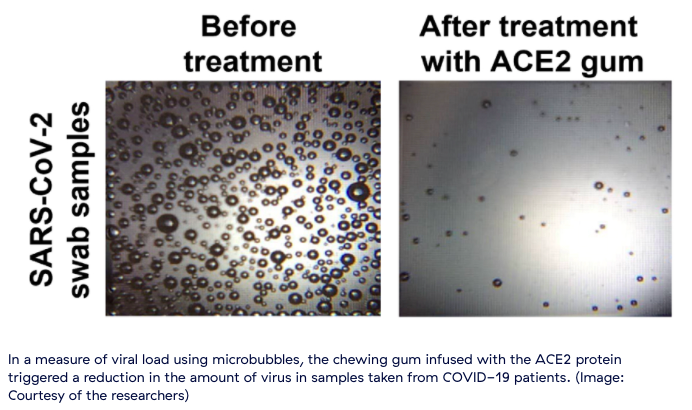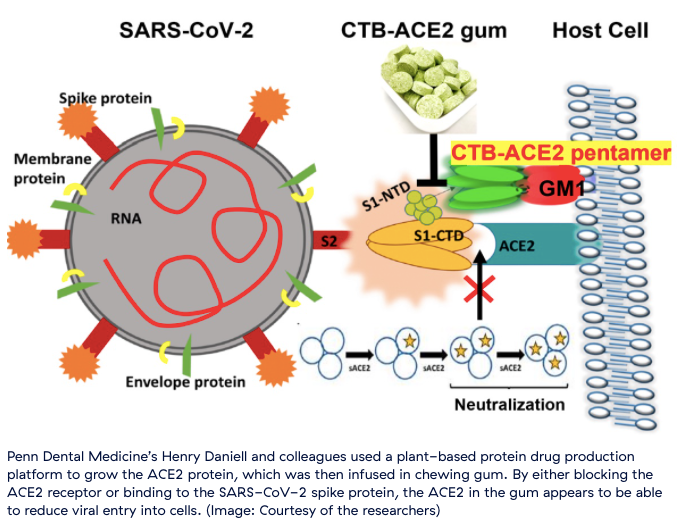
Earlier research has proved that the saliva of people infected by Covid-19 carries high virus levels. Researchers have now invented a plant-based chewing gum that traps the viral particles, SARS-CoV-2, which causes Covid-19. According to Nancy Lapid from Reuters, the idea of the gum is to help lower the risk of people infecting each other while talking, breathing, or coughing.

Elizabeth Gamillo from the Smithsonian Magazine explains how the gum works. The magazine writes:
“The experimental gum traps viral particles through copies of a receptor called the angiotensin-converting enzyme 2 (ACE2) receptors riddled along its surface. Like a key inserted into a locked door, SARS-Cov-2 enters human cells by latching onto ACE2 receptors. ACE2 proteins are found lining the surfaces of some cells and epithelial tissues in the body, such as the lungs, heart, blood vessels, kidneys, liver, and gastrointestinal tract.”
Grace C. Roberts from the Conversation explains that the scientists behind the gum designed it with plant-derived ACE2 proteins. Why? Because they believe that viral particles will latch on to the gum, thus minimizing the virus's capability to spread from mouth to mouth.
To test the efficiency of the gum's ability to trap the virus, the team behind the idea took saliva samples from patients being treated for Covid-19 and mixed it with a powder form of the gum. After the test, the researchers found that the gum containing ACE2 proteins soaked up the viral particles of the infected saliva and the regular chewing gum didn’t. Reuters said the viral particles were lowered by 95 percent when mixed with 50 milligrams of powdered gum.

This new gum is in early-stage research and has only been tested in a controlled lab environment with a simulated chewing machine. How effective the gum is in humans and the natural world has not yet been tried. The Conversation explains that the experiments done so far don’t answer questions about how the body temperature or oral bacteria impact the effectiveness of the gum. It is unknown how long the gum’s ability to trap the viral particles will last.
The researchers say that this gum feels and looks like ordinary chewing gum found in any convenience store. It can be stored at an average temperature for years without damaging the ACE2 protein molecules.
Researchers at the University of Pennsylvania published details about the study in the research journal Molecular Therapy.







